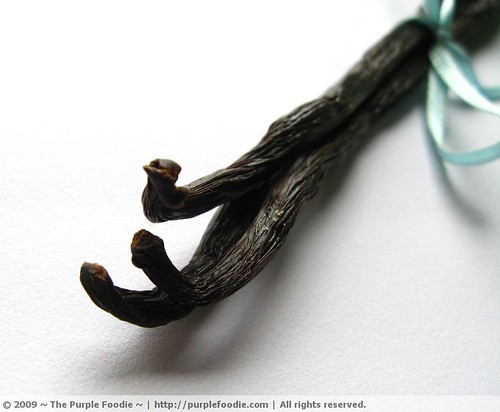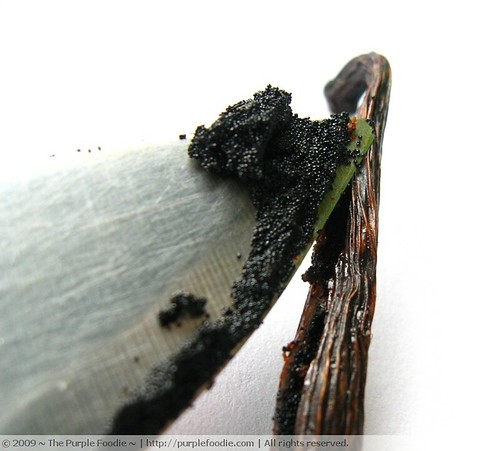When I was in college, I remember an economics class where one of the basic financial instruments was called a vanilla bond. Having never seen a vanilla bean before, the only thing associated it to the basic ice cream flavour and didn’t pay much heed. Years later when I had my brush with the real stuff, I took offense to the term. How can anyone use vanilla in the context of being something so commonplace? It is anything but plain and boring! I’m convinced that there has been a mistake somewhere along the line and the misrepresentation stuck. Vanilla adds flavour. Vanilla enhances flavour. There is nothing apart from good vanilla that can make a baker happy. And it’s no surprise that vanilla takes the number one spot on my list.
Vanilla is expensive and that’s why you should careful about what you buy. Good vanilla bean is moist, bendy and typically over 6 inches in length. A colleague of mine at work, Dhruv, shared these tips on how to buy vanilla:
- The bean should be aromatic and feel dense when held.
- Wrap the bean tightly around your forefinger. If the bean remains intact, you’re good. If the bean crumbles, you know that the bean is a little old and not at the peak of its flavour.
- After you’ve unwrapped the vanilla bean from your finger, and you see an oily residue, it goes to show that the beans are concentrated with oils and are full of flavour; a good sign.
- When you cut the bean at either of the ends, you should see oil bubbles oozing and not just the vanilla caviar.
As for storage, vanilla beans are best stored in wax paper or plastic wrap and then placed in an airtight container in a cool, dark place. Just make sure not to refrigerate it because it tends to get mouldy.
I’d heard of double strength and triple strength vanilla, and it sounded like a tempting purchase, but I soon learned that it isn’t really a matter of concern for most of us home bakers. It is just something used by professionals when they’d rather use more concentrated extract in lesser quantity so as to maintain the colour of a pristine white icing that requires vanilla flavourings sans the brownish tinge.
I’m sure you’d be interested in making your own vanilla extract. I made it a while ago, and am going to make a few more bottles of it thanks to Rajika who sent me a bagful of vanilla beans. The extract is especially good with ice creams because it has a vodka base and results in a much softer, delicate texture (since vodka freezing point is way lower at 27°C/16°F).
I have only recently discovered the goodness of steeping vanilla bean with peaches and cherries in hot water to infuse the flavour and letting it stand overnight for a super delicious jam. For this, simply cut the bean on either ends, make an incision through the length tough skin and scrape down to get your dose of pure vanilla goodness.
Once you’ve scraped off the vanilla, you can either stick the remaining bean into a jar of sugar for your very own vanilla sugar or dry it in the oven on a low temperature setting (115°F/45°C), grind it to a powder and use it in sprinkled over French toast or in cakes, ice creams or any place you’d like pronounced vanilla visibility. It would especially be great swapped with cinnamon in this cake , both in the batter as well as the sugar crust.
I came upon something quite unique – vanilla infused olive oil on Vanilla Garlic. Garrett suggests quite a few ways as to how this can be used, but the one I like the most is to use it over grilled fruit. I’m thinking it’d be great to brush peaches with this oil just before placing it on the grill. Unfortunately, I’ve got to wait another year before I get my hands on some peaches. Until then I’m going to occupy myself with other vanilla projects.
Have tips on using vanilla bean? Let’s discuss in the comments section.

